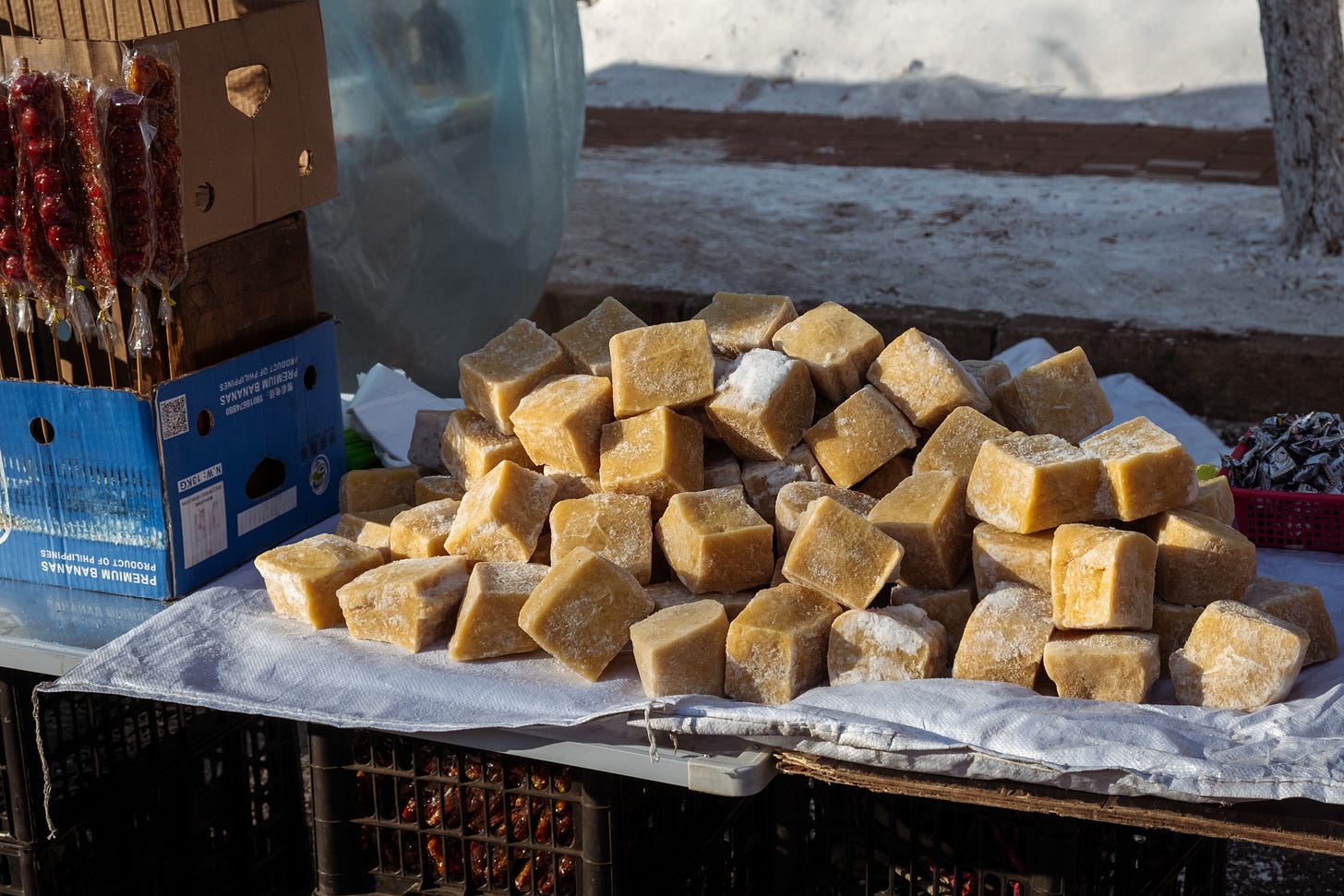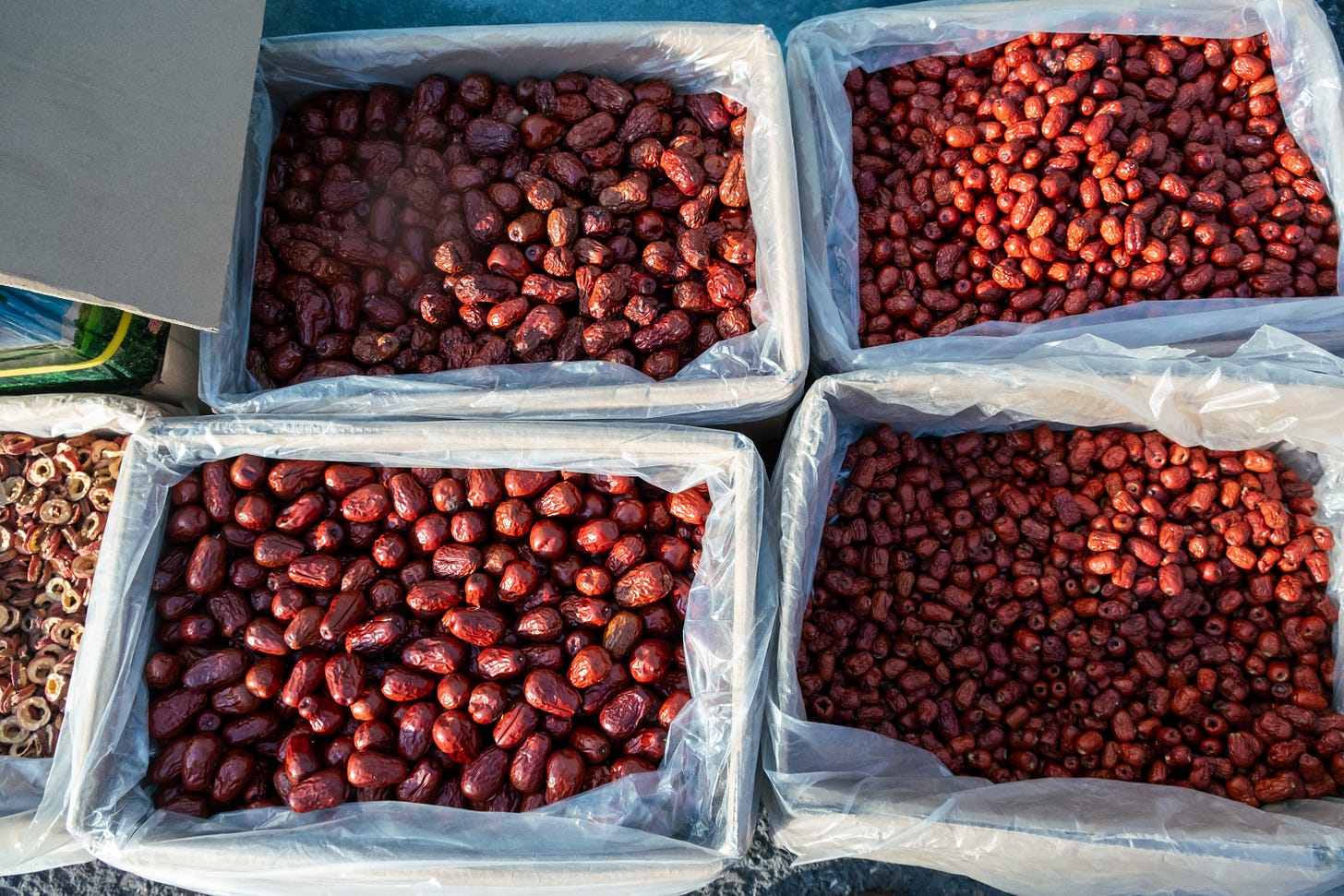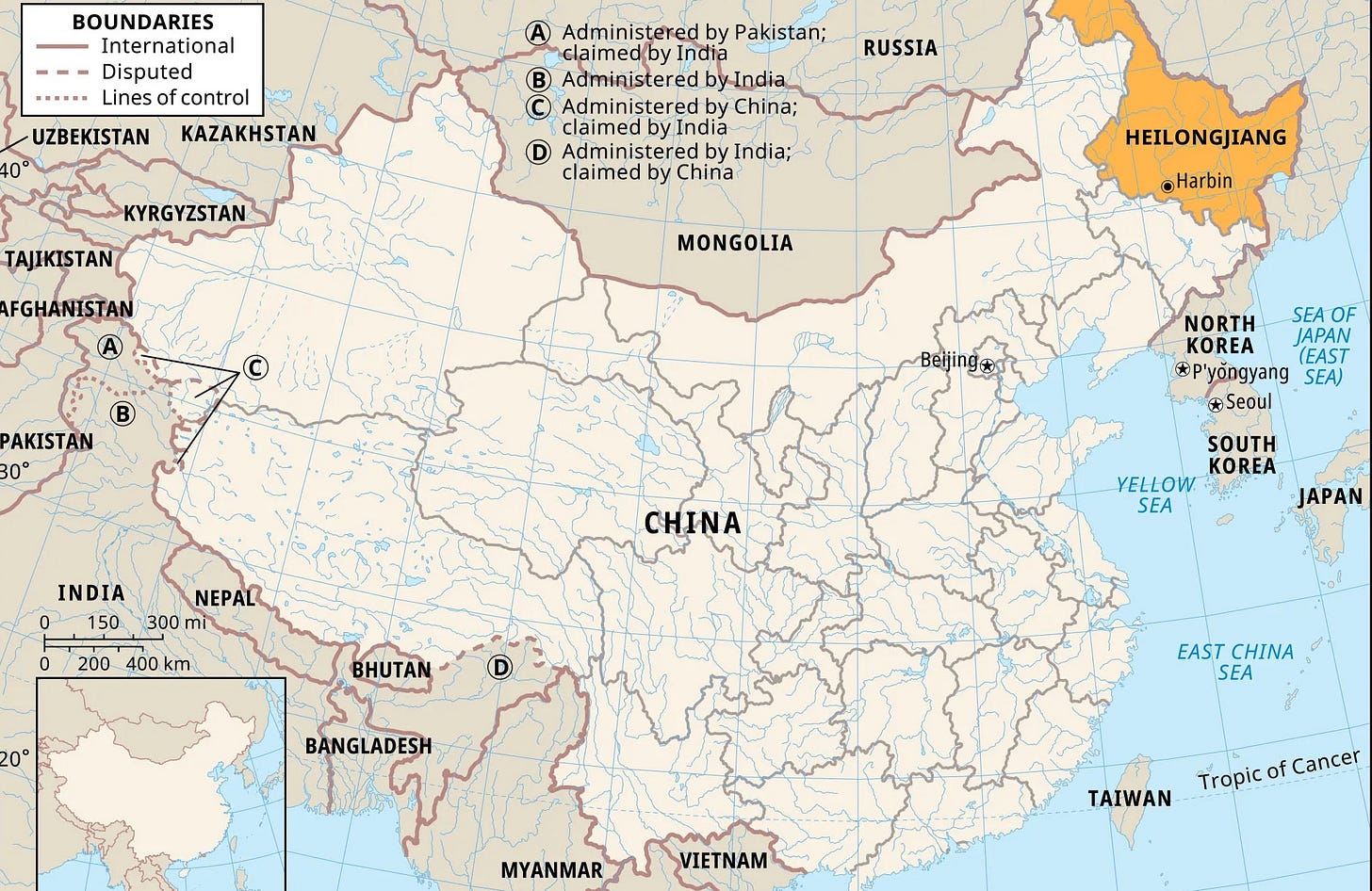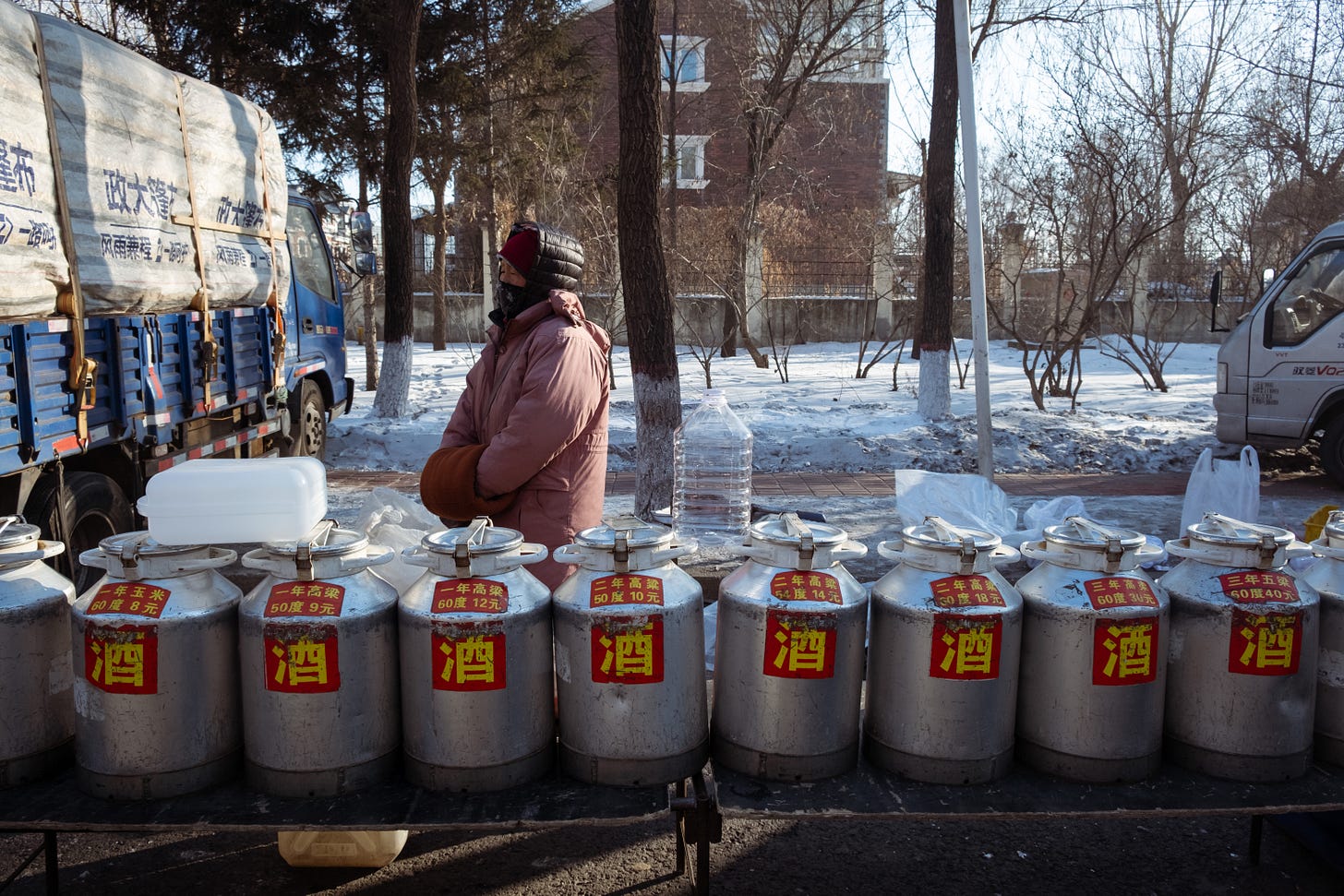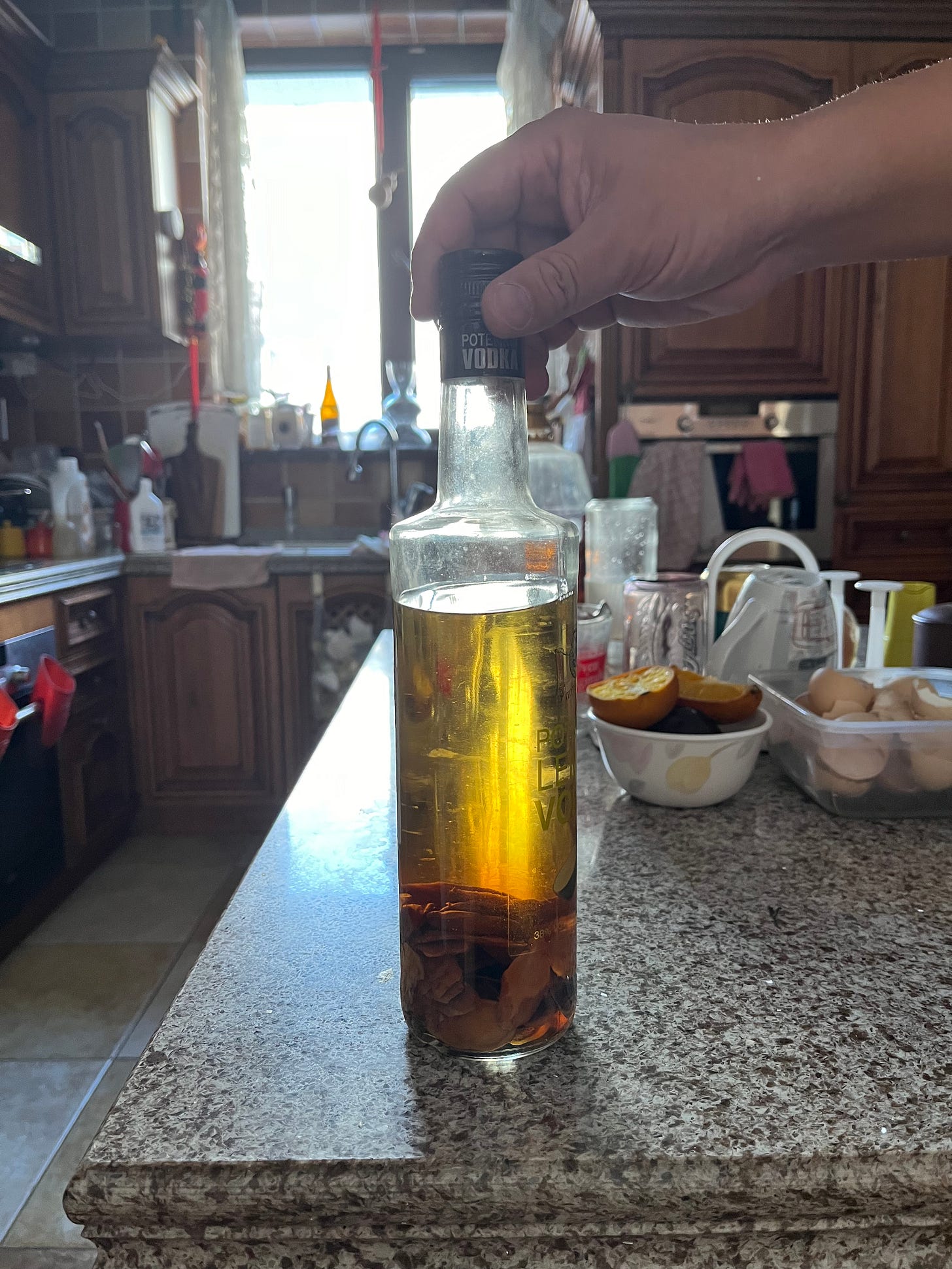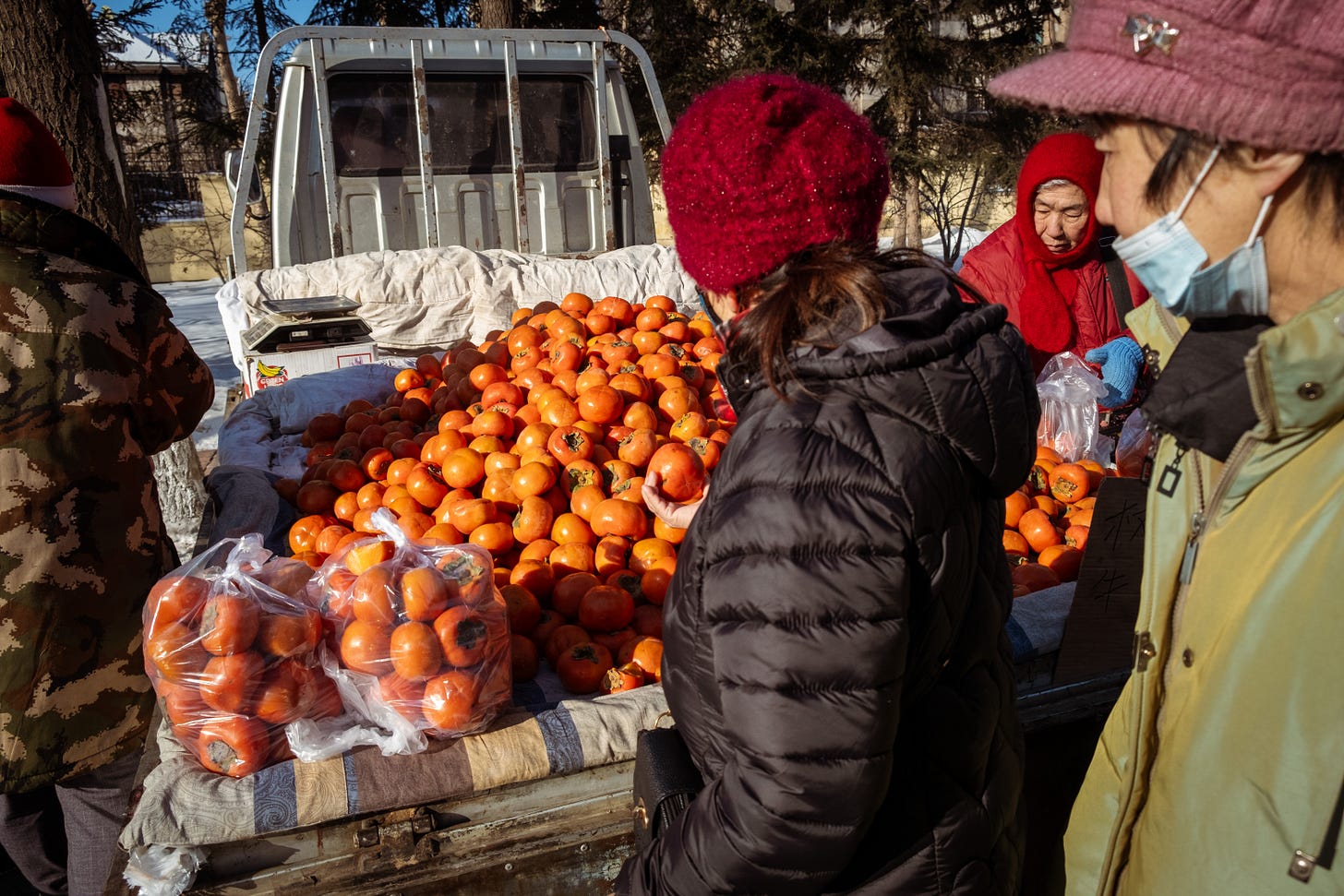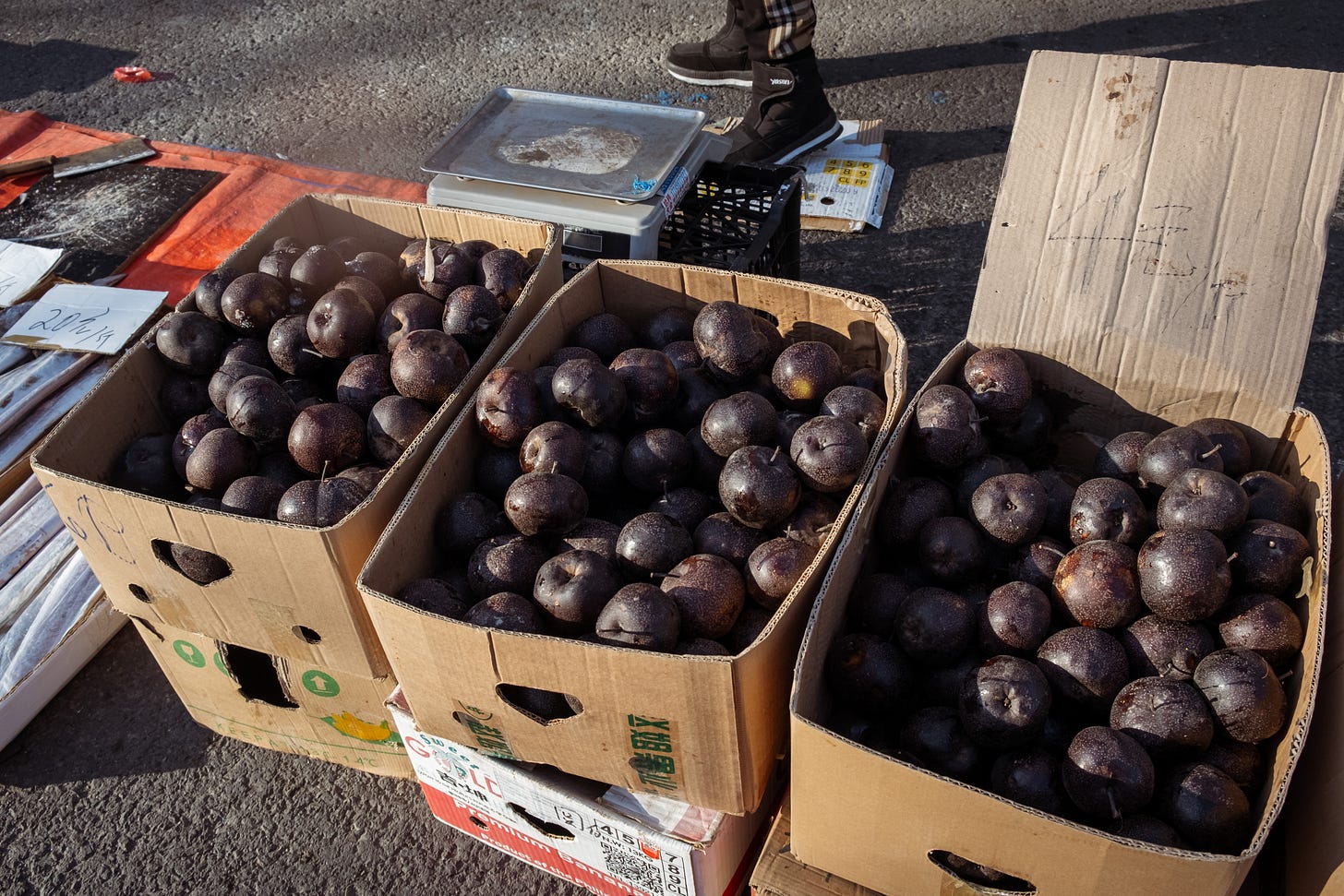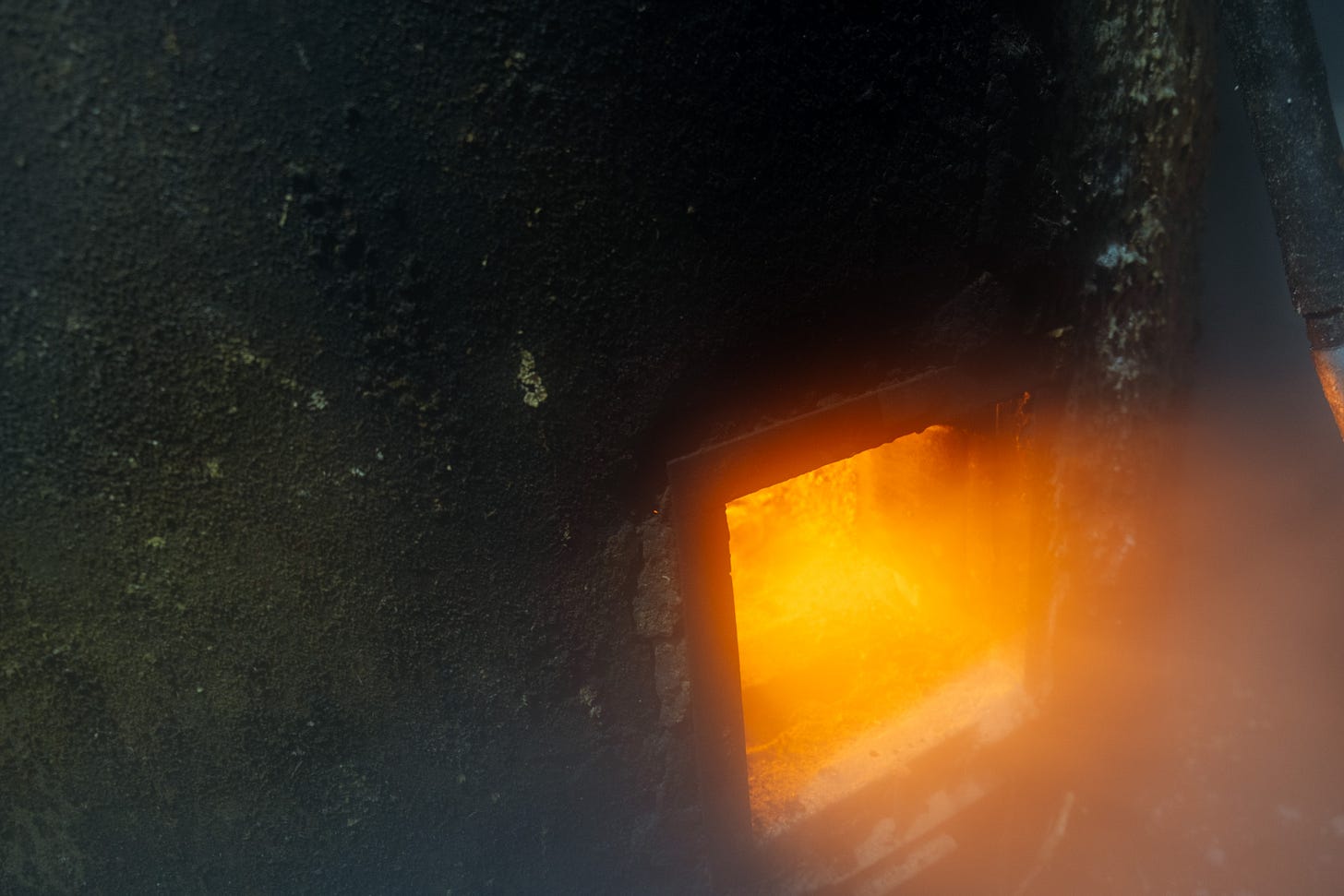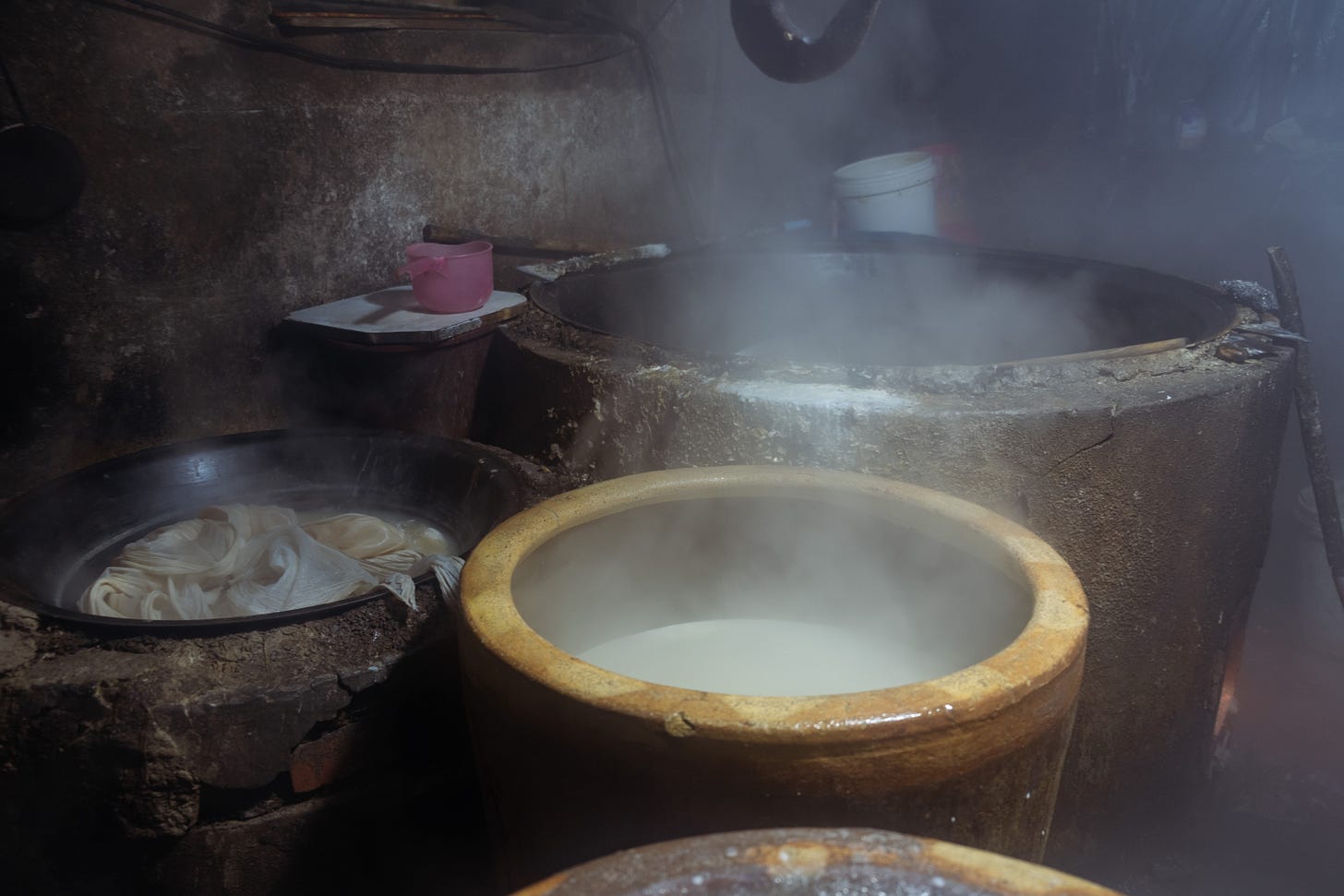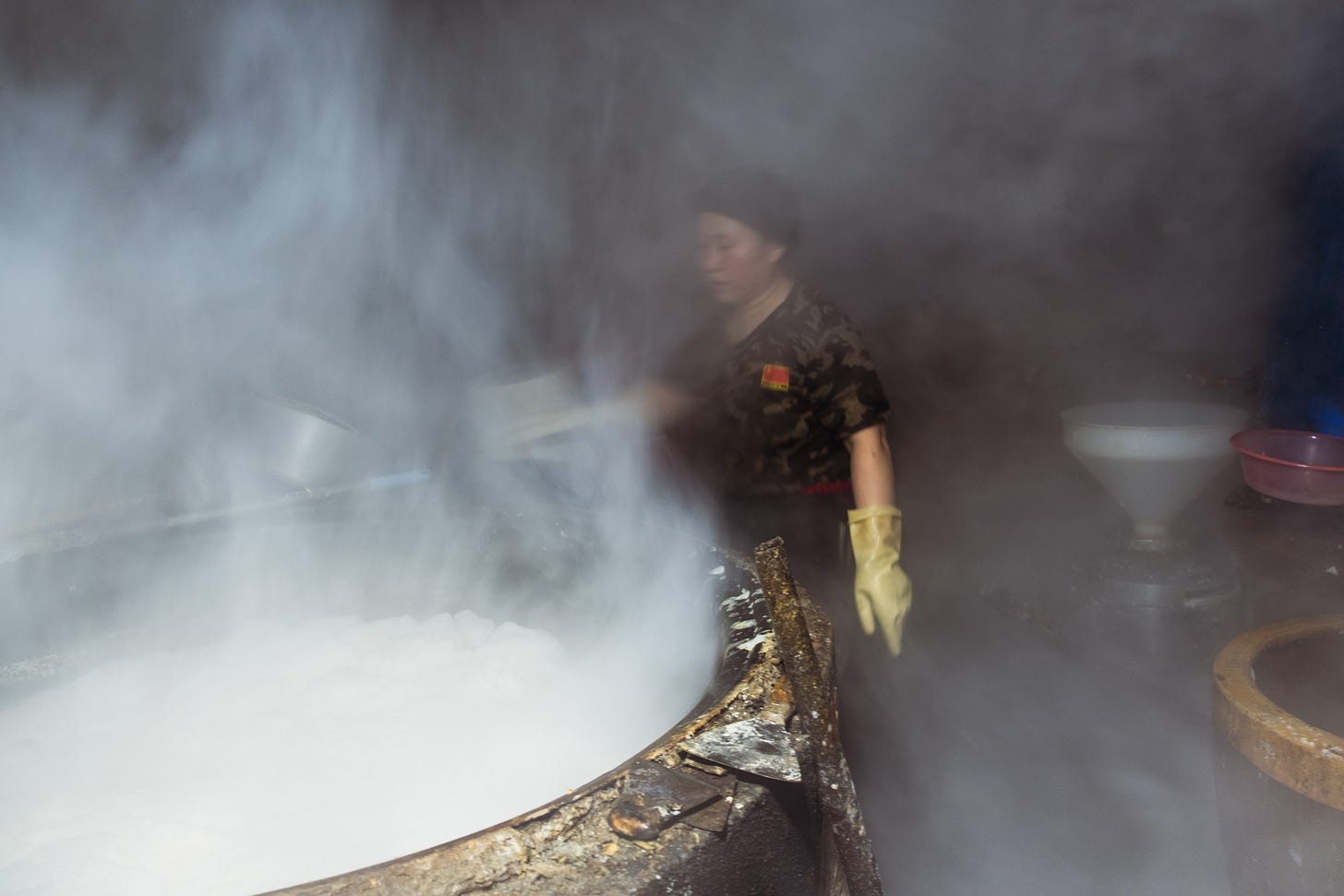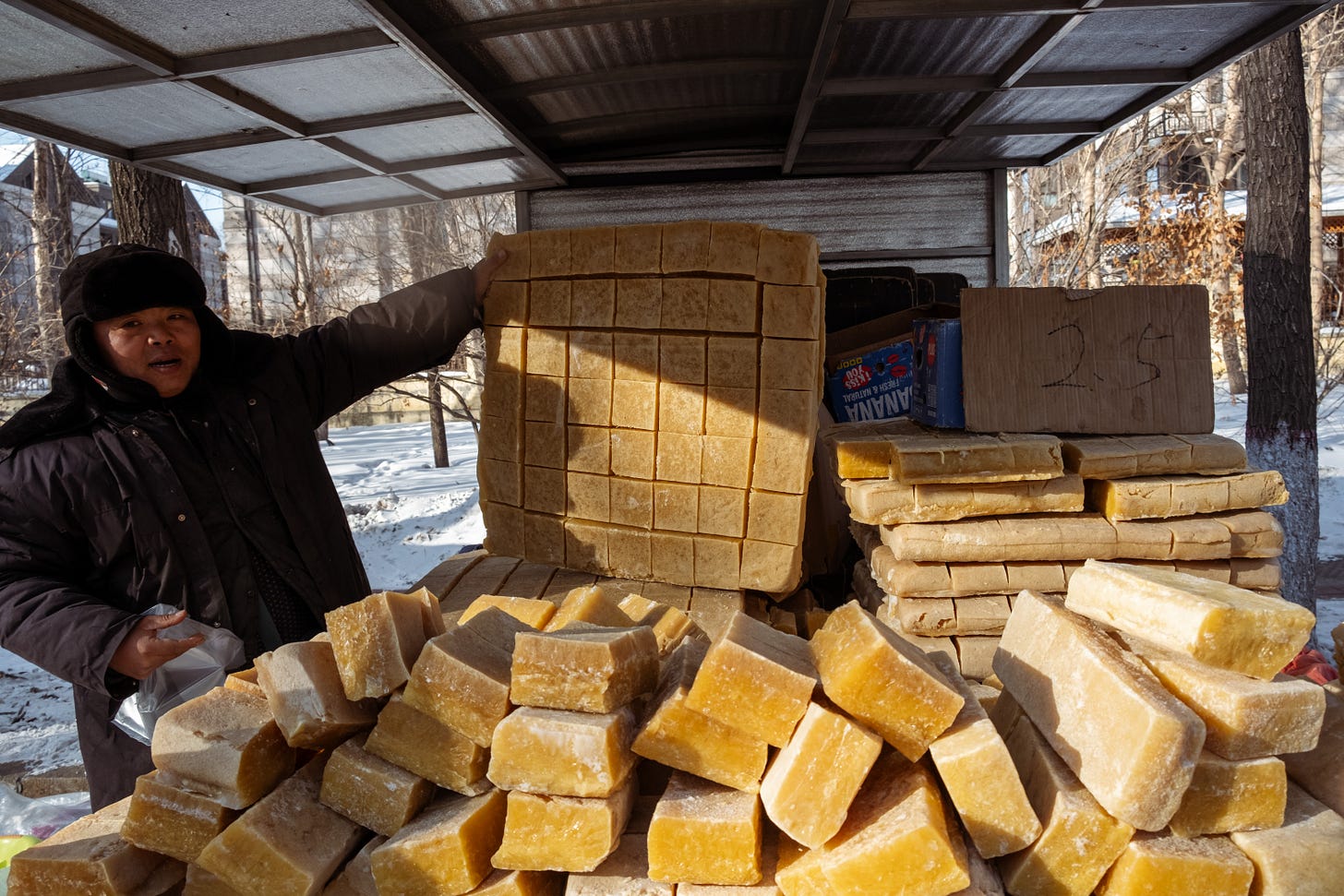
I’m home in Harbin for the LNY holiday, in China’s northernmost province of Heilongjiang. It’s the dead of winter and we’re a few hours from literal Siberia, yet I feel warmer here than I ever did in mild Shanghai, thanks to the city’s geothermal heating system that pipes hot water directly into the walls and beneath the floorboards of residential buildings. I wear short sleeves and do yoga with my aunt and shuffle around the house barefooted on toasted floors, sans slippers, while the sun glitters on the snow in -20 Celsius weather outside, and it’s wonderful.
The city experienced an unprecedented surge of tourists this year, mostly driven by wanghong 网红 (Chinese term for internet celebrities/influencers). All of a sudden Harbin is the place to visit— my friends have either been to Harbin already, or are talking about going to Harbin. For months, tourists have been stomping around Zhongyang Street in big coats and two-eared fur caps, snapping photos by the Songhua riverbank and gawking at the glowing ice sculptures at night.
My relatives jokingly call the visitors nanfang xiaotudou, little southern potatoes, but they aren’t complaining: the explosion of tourism has boosted the local economy, and hotels and restaurants are completely booked. Chinese people love crowds— the more the merrier— and the extra bodies just add to the renao of festivities right before the new year.
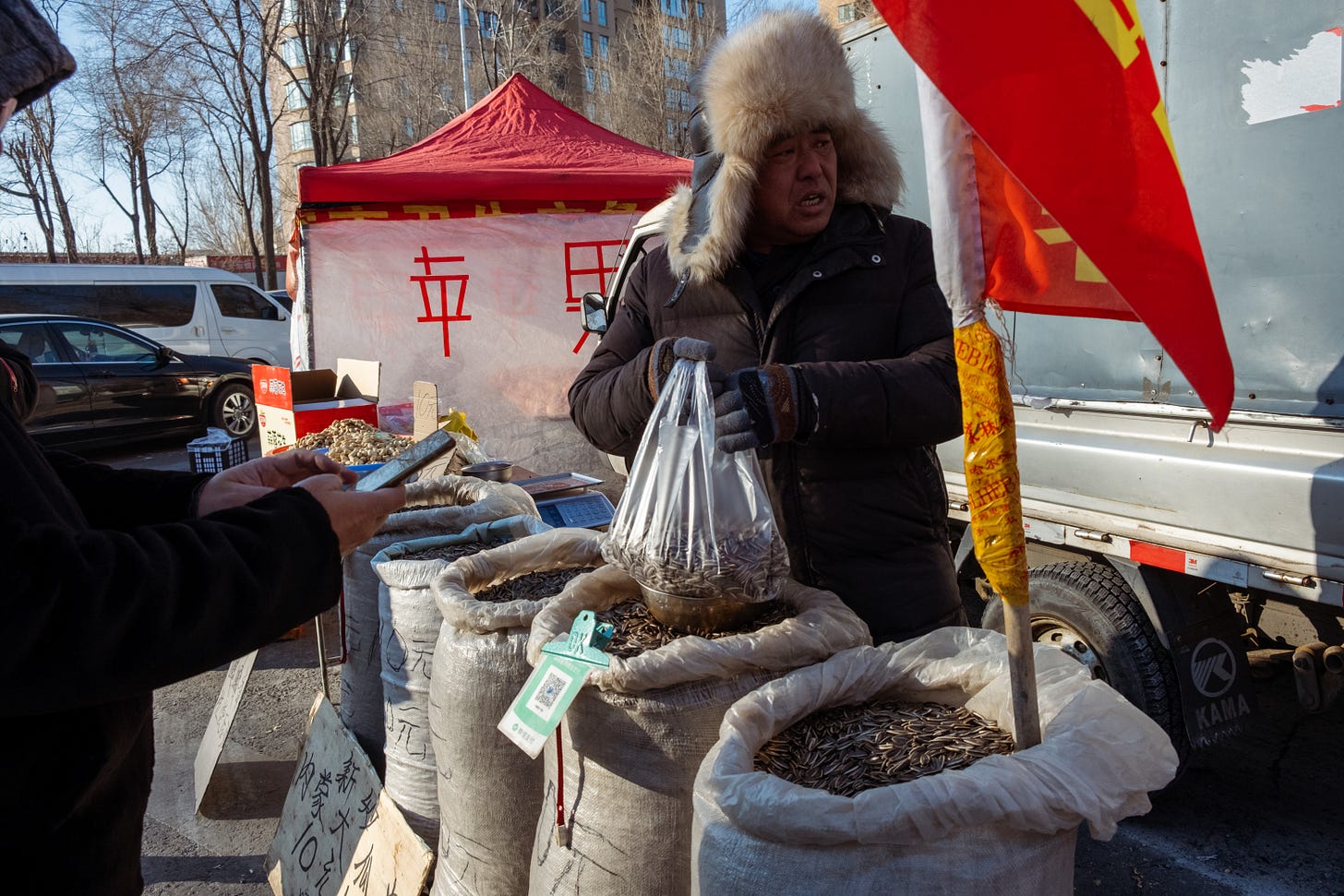
I love Harbin. Both my parents were born and raised here, and I’ve been back mostly in the summers, but there’s something about the deep of winter that draws out the beauty of the city. The warmth of the people and indoor spaces and the charm of the food, the colonial Russian architecture and old cobblestone streets is undeniable.
I still need to properly visit the Ice and Snow World 冰雪大世界— it’s astoundingly beautiful and the one thing people come to Harbin for. The last time I visited was during Covid, when the entire festival was closed down.
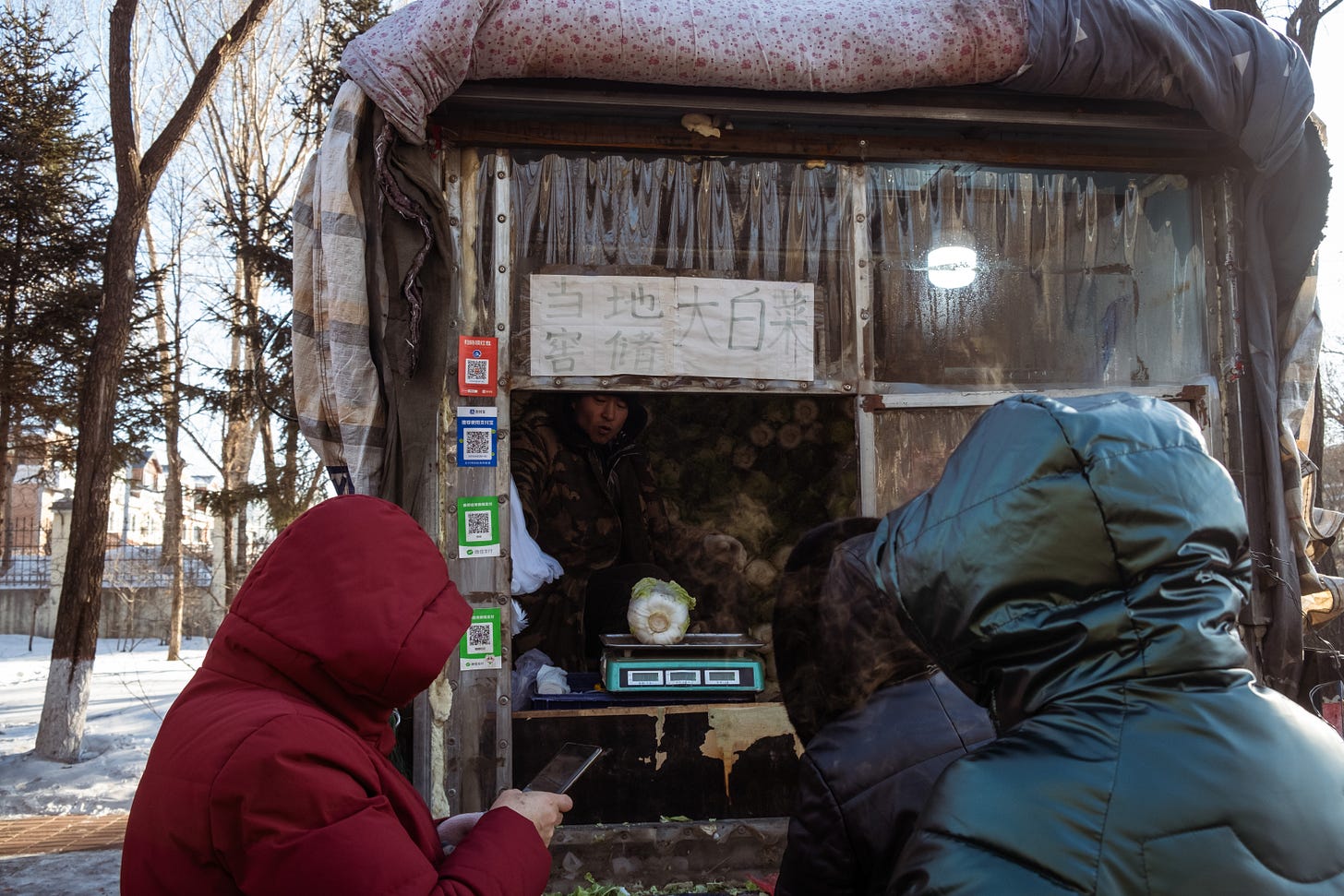
We passed metal and clay urns of shaojiu, a grain liquor made and sold by locals in the morning market. Shaojiu is the same thing as Chinese baijiu, although people here call it xiaoshaojiu 小烧酒 (‘little heated liquor’). It’s made with sorghum, occasionally with glutinous rice, buckwheat, or Job’s tears added to the mash. The sorghum is steamed and inoculated with qu (koji) starter to ferment. Once distilled, the liquor is deadly and colorless, about 50-60% alcohol by volume.
You have to drink baijiu with food, it’s too strong on its own. My uncle brings his own baijiu when we go out to restaurants with relatives, and they pour rounds of it into tiny little glasses. He can down three glasses and still be good. Meanwhile I am trying to appreciate baijiu, apparently there are tropical fruit notes and also anise or whatever, but I can manage one sip and that’s it. It’s like drinking liquid fire.
My uncle likes to infuse his shaojiu with slices of lurong (cartialgenous), and he says ginseng, huangqi, and other dried roots are common additions with potent medicinal properties. He has about ten different batches in the basement, in mismatched vodka bottles, along with whiskey. My aunt runs a business selling Russian imported goods, mostly snacks and chocolates, as well as wines and spirits, so she brings home a lot of free alcohol. (Come over any time.)
Frozen pears and persimmons are a local specialty. They’re very humble but I’ve seen restaurants carve the fruit up in fanciful slices and serve them on a plate for dessert, a very dongbei end to a meal. The pears aren’t naturally that dark: you freeze, partially thaw, freeze and partially thaw the pear repeatedly until the skin deepens into a bruised purple and the flesh inside ruptures, turning translucent and sweet and juicy, the texture of a plum. You let the pear thaw slightly and then eat it in the warmth of your house, resisting the urge to lick your fingers.
Tofu-making in Bayanzhen 巴彦镇
Last Tuesday I visited Bayanzhen 巴彦镇, a village an hour and a half drive from Harbin. My aunt found out that her cousin’s family has family that makes tofu, but they were closing permanently in four days, and so she called me and I booked a flight from Shanghai to Harbin early. We drove out from Harbin, got hotel rooms in town and woke up at 2 am to document the whole process (tofu-making begins very early, it’s practically nocturnal). I caught their very last morning of production.
It’s all on Instagram, in case you missed it: Part 1 (making soy milk and the skin) and Part 2 (the tofu). I’m still trying to process it to write about, because it’s truly such a loss.
Some of my favorite Dongbei (northeastern) dishes
Jianjiao gandoufu 尖椒干豆腐
Braised tofu sheets with green pepper. I’ve had this at two restaurants just in a week, and I also made it at home for my aunt and uncle. They can attest that mine is pretty darn close. I made a few tweaks to the version originally in my cookbook. Recipe at end.


Dongbei daliangcai 东北大凉菜
I love the presentation of the dongbei liangcai, it’s so colorful. This is my favorite salad of all time, with julienned vegetables, shredded tofu sheets, cucumber and raw onion, with a dressing rich with sesame paste and chili oil. Like much of dongbei cuisine, it’s served in a great heaping portion. Recipe below.

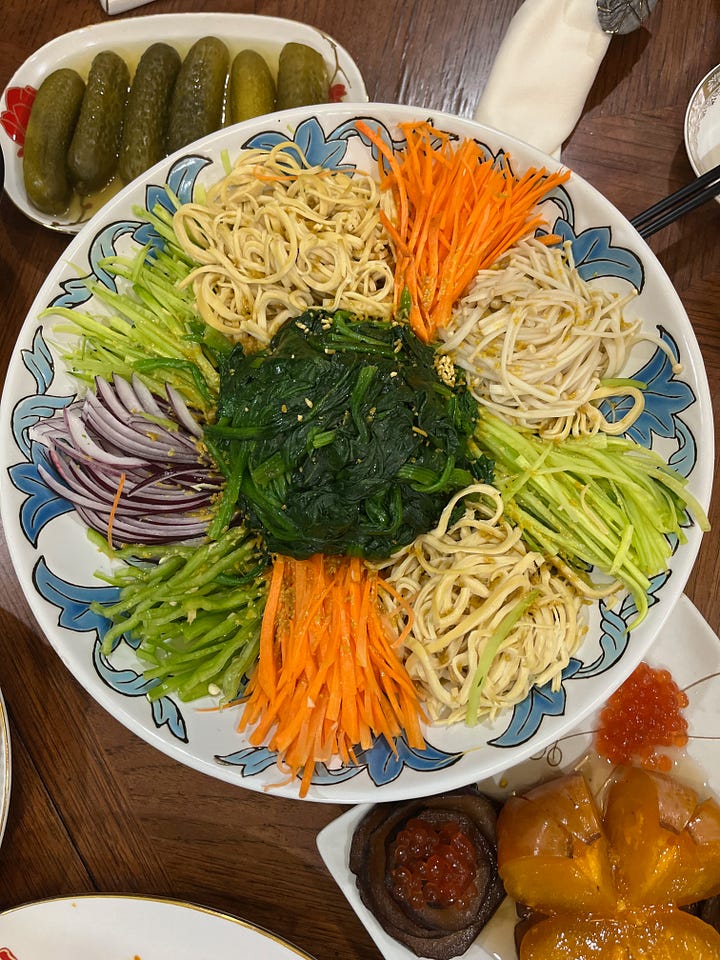
Jianbing 煎饼
Northern Chinese pancakes or ‘crepes’. The batter is a mix of grains: rice, millet, corn, sorghum (gaoliang mi 高粱米), soybeans, and water. There’s no wheat.
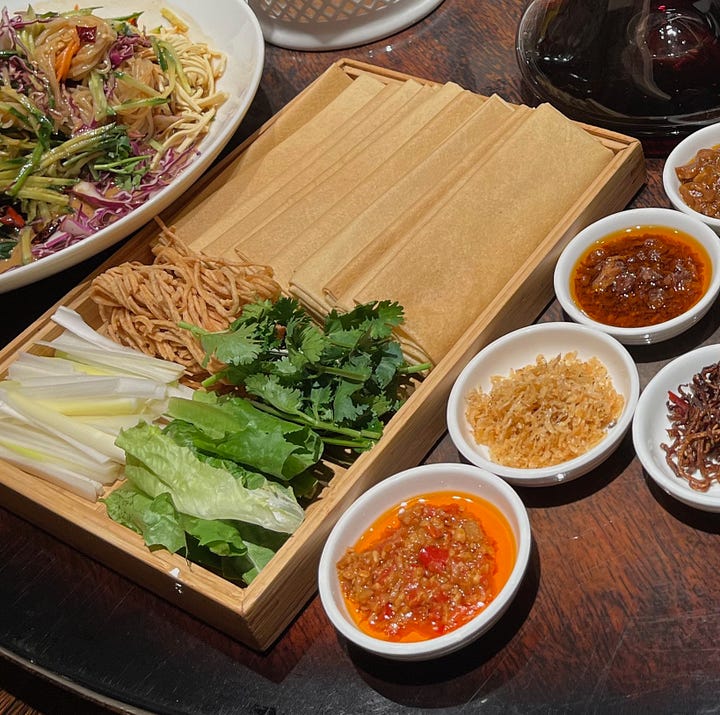
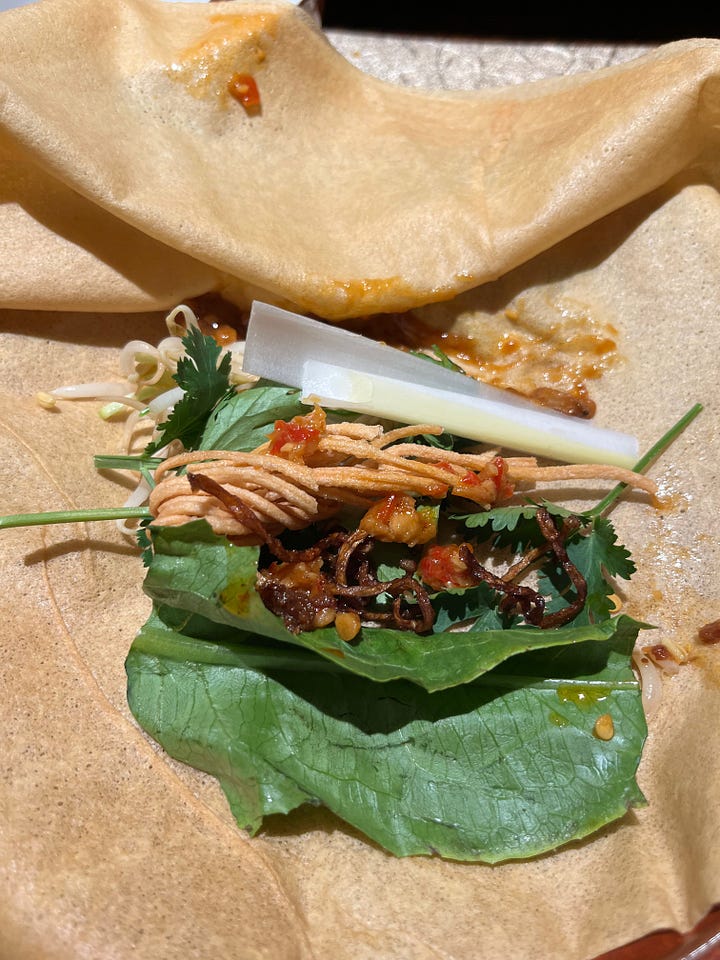
The crepes are formed on a spinning iron pan and folded in stacks. They soften and become flexible enough to wrap with slivered scallion, fried noodles, cilantro, and an assortment of chile sauces and bean pastes.
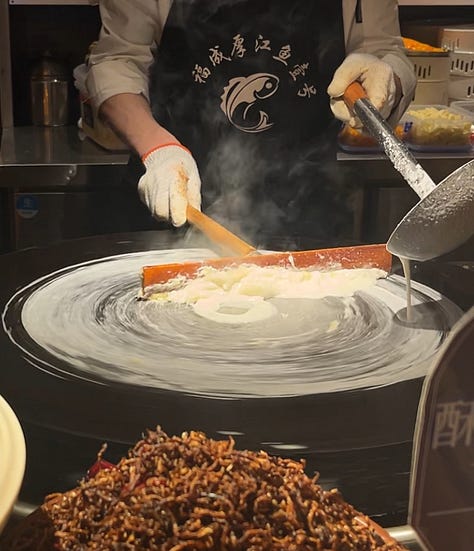
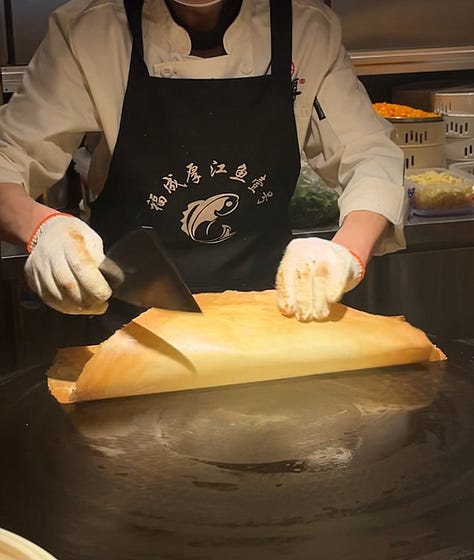
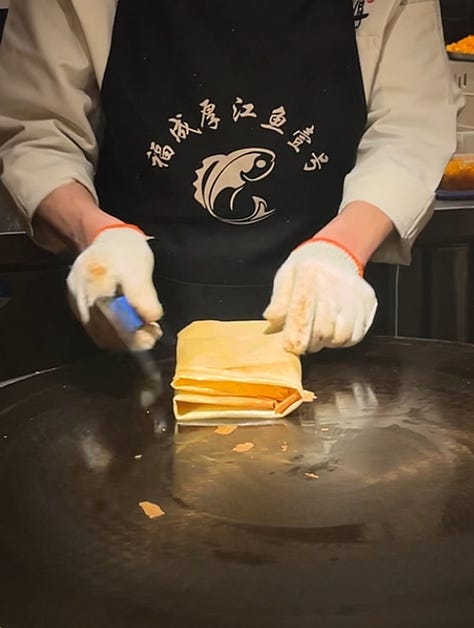
Stir-fried bean sprouts 炒三丝
A tumble of fragrant bean sprouts and garlic sprouts, removed from the wok in that crucial ten second interval between crisp and soggy. The green things in the dish aren’t garlic chives (韭菜 jiucai) or garlic scapes/shoots (蒜苔 suantai). They’re the tender sprouts grown from heads of garlic, 蒜苗 suanmiao.
This is a classic dongbei dish: there weren’t many fresh vegetables in the frigid Northern winters, so people had to make do. Bean sprouts could be grown indoors and became a staple.
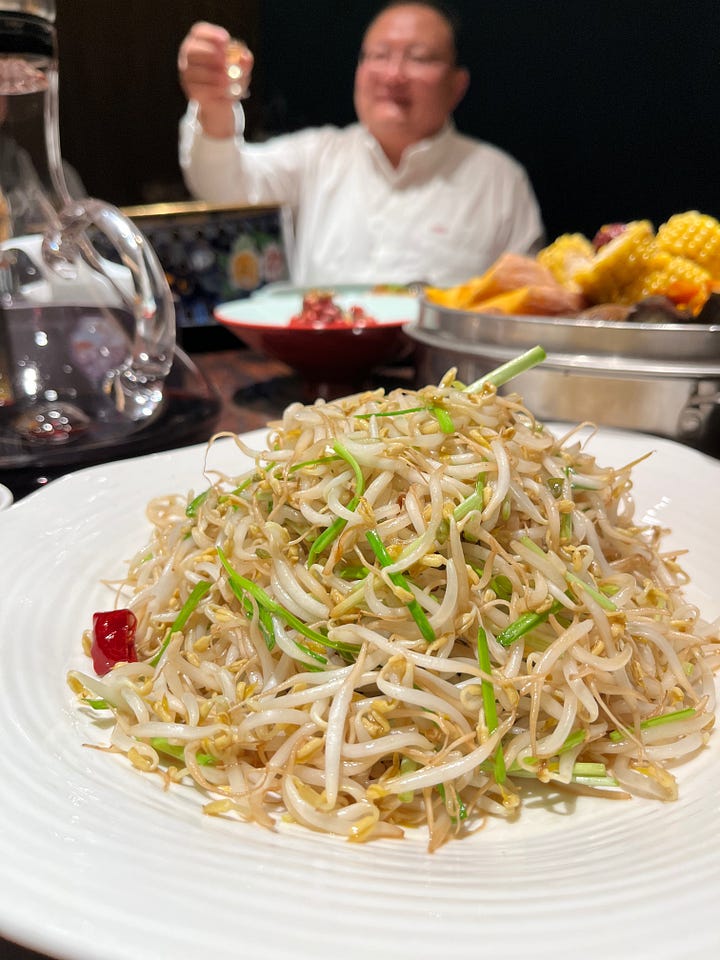
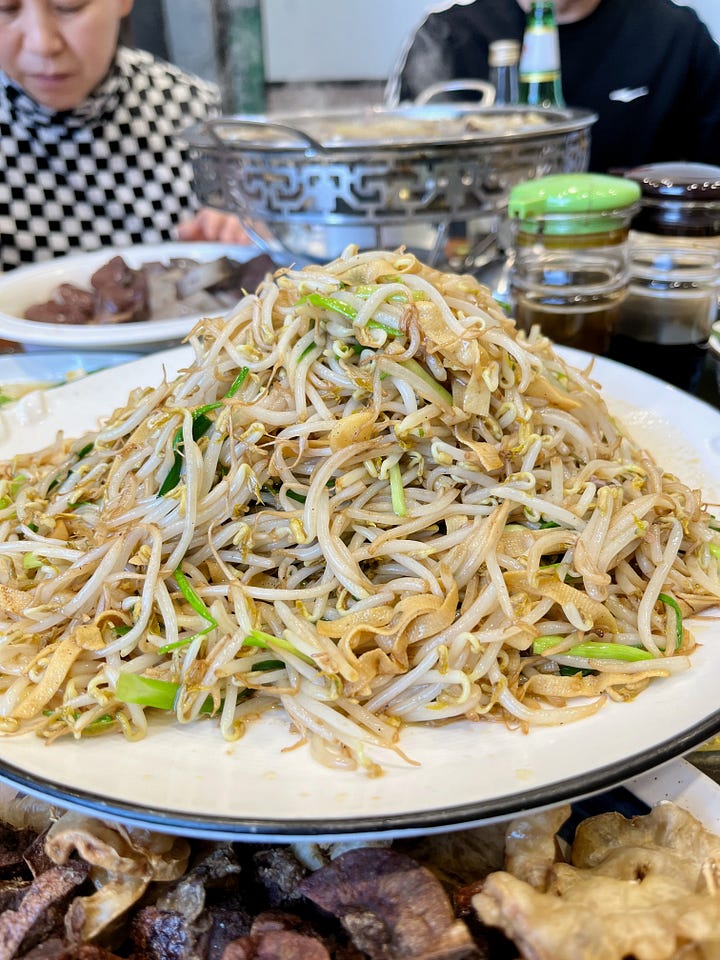
Chunbing 春饼
Sunday was February 4th, the first day of spring (Lichun 立春).
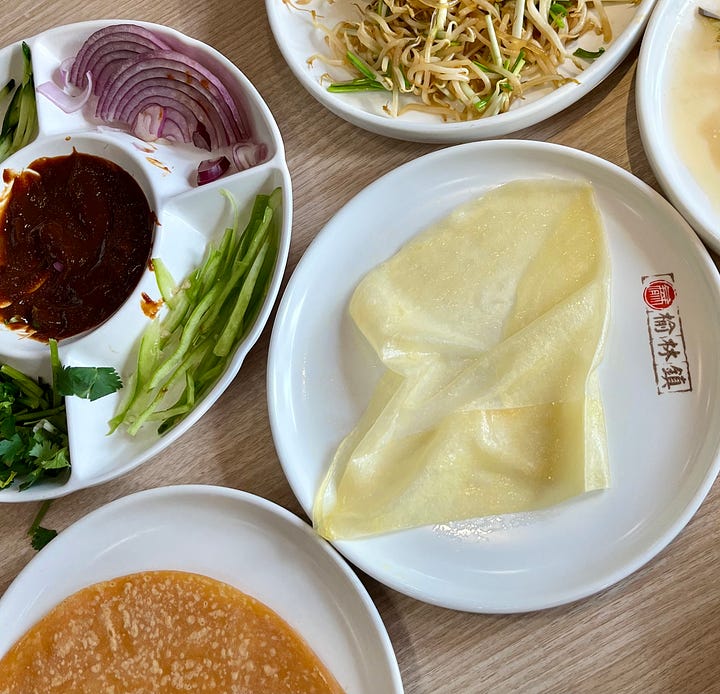

Traditionally, you eat spring rolls on this day, so we went out to a restaurant that specializes in chunbing. The delicate, chewy wrappers came in spinach and carrot-juice-colored options. The fillings: sweet wheat paste (tianmiangjiang 甜面酱), slivered cucumber, red onion, cilantro, and green peppers, as well as bean sprouts, potato slivers, and stir-fried eggplant.
Doubao 豆包
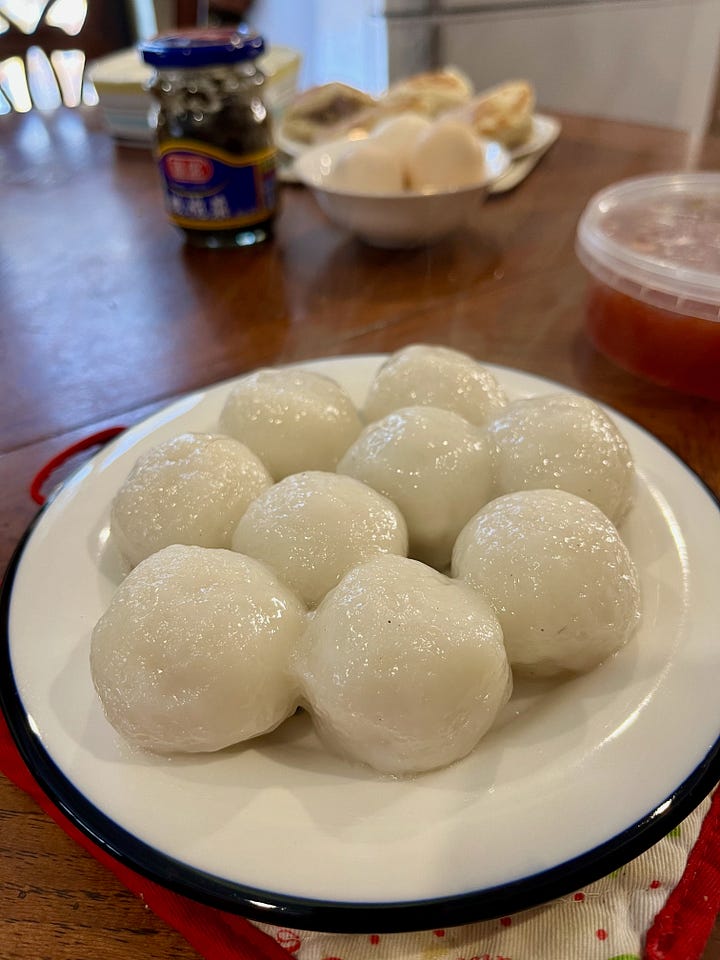

The food that I missed most of all was doubao or “bean bags”: steamed, sweet dumplings made from glutinous yellow rice (huang mi) or white glutinous rice.




